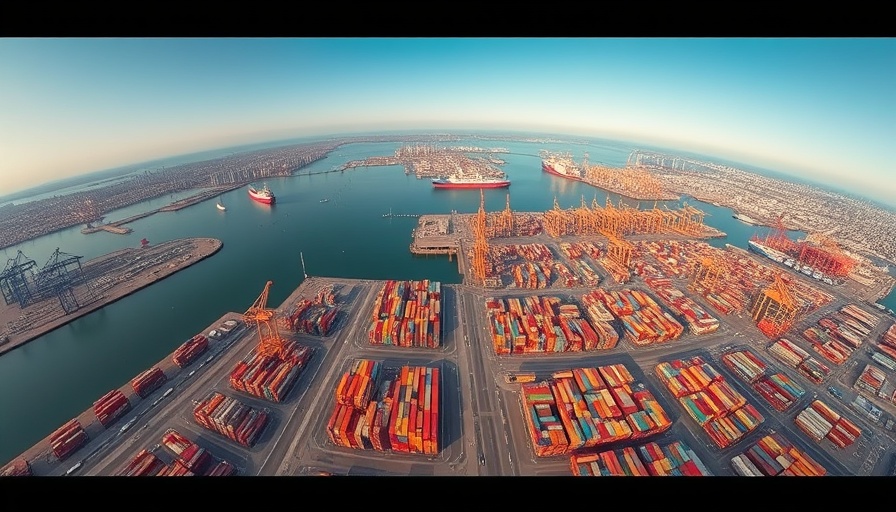
The Expected Challenges for the Port of Long Beach
The Port of Long Beach, typically a powerhouse in U.S. shipping, is forecasting a concerning decline in cargo volumes for May. Following an outstanding April - the port's strongest performance on record - the expectation now is that shipments will drop by more than 10%. This decline is attributed to the uncertainty surrounding tariffs that were recently paused but continue to loom large over the industry.
Tariffs: A Double-Edged Sword
After 11 consecutive months of growth, the port's operators are bracing for a significant impact from tariffs that drastic reduce shipping traffic. CEO Mario Cordero noted that while April brought in 867,493 Twenty-foot Equivalent Units (TEUs), May may see a sharp downturn. The import volume hit a remarkable increase, marking a time of optimism, but this presents the reality that economic pressures could soon lead to higher prices and reduced product availability for consumers.
Historical Context and Implications
The recent performance of the Long Beach port stands in stark contrast to previous downturns in international shipping facilitated by tariffs and trade restrictions. While some analysts regard the temporary pause in tariffs as a relief, the lingering effects of prior tariffs from trade disputes could potentially disrupt not only shipping rates but also employment within the logistics sector.
Impact on the Local Economy
The repercussions from the anticipated decline are significant, as Cordero hints at possible job losses and reduced consumer choices. In a community heavily reliant on the port for economic stability, this downturn could reverberate through the workforce and retail sectors. Local businesses that rely on steady imports may face challenges that could inhibit their operations, posing further risk to job sustainability.
Future Outlook: Stabilizing Efforts
In response to these fluctuations, the Port of Long Beach is committing to continued investments in infrastructure. By enhancing rail and terminal processes, the port aims to adapt and handle cargo more efficiently. This long-term strategy is vital to maintaining competitiveness in the wake of changing trade dynamics and economic challenges. The goal remains focused on improving operational effectiveness to manage potential disruptions in future months.
Conclusion: More Than Just Numbers
As the Port of Long Beach witnesses a potential drop in shipments, it not only reflects broader economic trends but also paints a picture of a community and workforce facing uncertainty. Understanding how these changes will impact consumers and businesses is crucial. As the port navigates through these challenging waters, the hope is that proactive measures can mitigate the downturn's effects.
In this vital industry, staying informed about shipping trends and their implications can prepare both businesses and consumers for what lies ahead.
 Add Row
Add Row  Add
Add 




 Add Row
Add Row  Add
Add 

Write A Comment